One-flowered broomrape (Orobanche uniflora) is also known as oneflowered broomrape, naked broomrape, cancer root, one-flowered cancer root, pipes, ghost pipes, squawdrops, and squirrel’s grandfather. It is the fourth plant that we’ve dealt with here that has no chlorophyll. Without chlorophyll the plant is unable to nourish itself through photosynthesis, so it lives its life as a parasite, siphoning off its nourishment from other plants. Unlike the previous parasitic plants that we’ve discussed, this one doesn’t get its food by tapping into tree roots. Instead it feeds off non-woody (herbaceous) plants like Asters.
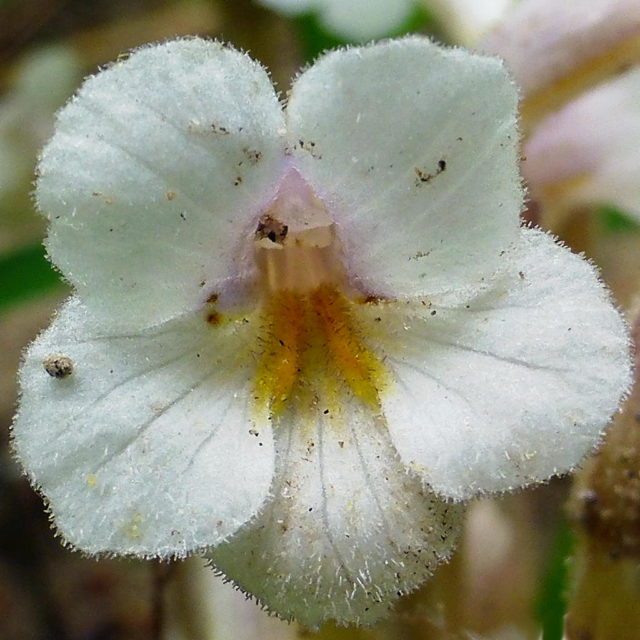
It’s seeds can lie dormant in the soil for years until a chemical signature of a potential host plant reaches the seed, at which time the seed sprouts and starts growing toward the source of that chemical signature. The roots (haustoria) of the one-flowered broomrape are adapted so that they attach onto the roots of the host plant and draw away nourishment from that plant for its own purposes. Certain fungi must also be present in the soil because these act as an intermediary in the gaining access to the host plant’s nutrients. Since the plant has such complex demands, transplanted plants rarely survive.
The plant has tiny, brownish scales that grow along its underground stems rather than true leaves. With the exception of the flower stalks, this plant lives its life entirely beneath the surface of the earth. The flowers are cross-pollinated by bumblebees and possibly other long-tongued bees. In the absence of pollinators, it is believed that the plant can self-pollinate. The plants flower for about two weeks from late spring to early summer. The flowers are usually white like the ones here, but sometimes they take on a lavender tint. Occasionally they are brightly colored.
The plant tends to grow in high-quality wooded, rocky areas. Although I’ve known of the plant for some time, the ones photographed here are the only ones I’ve seen while hiking in Ohio. They were photographed in late May in the Augusta-Anne Olsen State Nature Preserve in Huron County. We will be publishing a post about this state nature preserve soon.
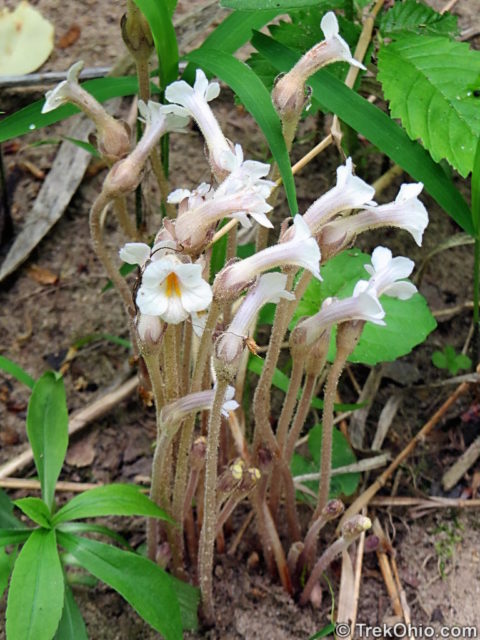
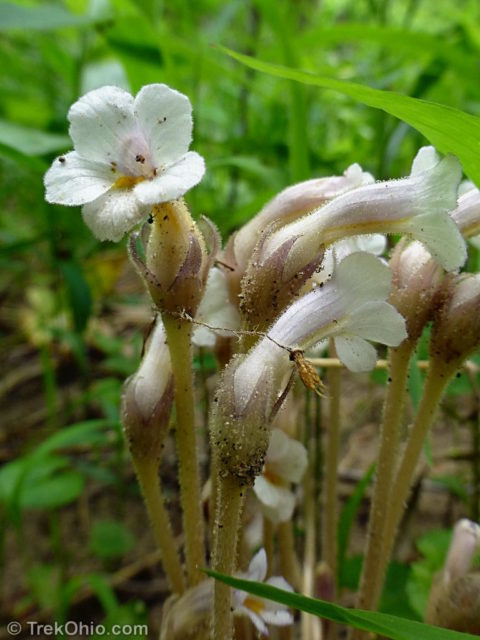
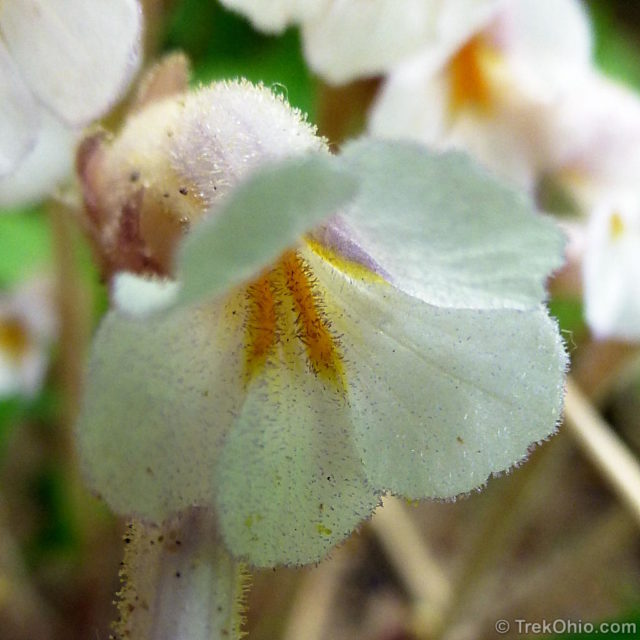
By the way, the name “broomrape” originated in Europe. It referred to relatives of the One-flowered broomrape that were native to Europe and which parasitized a plant host known as “broom.” The alternative name “squawdrops” refers to the fact that Native Americans consumed some portion of this plant. I don’t know which portion, or how it was prepared.
Additional information
- USDA PLANTS: PLANTS Profile for Orobanche uniflora (oneflowered broomrape); according to the distribution map, it is in every state in the U.S. except Hawaii. This site asserts that the plant is an annual, while other sites say it is a perennial.
- USDA PLANTS: Ohio County Level Distribution for Orobanche uniflora (oneflowered broomrape)
- Wikipedia: Orobanche uniflora
- Illinois Wildflowers: One-Flowered Broomrape (Orobanche uniflora)
- MissouriPlants.com: Orobanche uniflora page
- Calflora: Orobanche uniflora; this source disagrees with other sources and asserts that one-flowered broomrape is a perennial.
- Wikipedia: Broomrape
- Ohio State University: Orobanchaceae of Ohio (PDF)
More on Plants without Chlorophyll
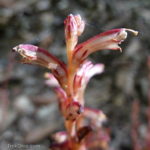
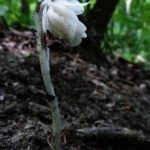
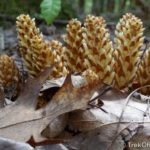
So cool! We’ll need to watch for this!
Sit is not a “bad”plant, just a survivor? And naturalto the area?
Oneflowered broomrape is a native plant (and if you look at the distribution map at this link, you’ll see it grows in your area). The previous parasitic plants that I discussed used trees as their hosts, and the trees were able to withstand having some of their nourishment siphoned off. However since oneflowered broomrape siphons off nourishment from other small plants, I believe it can harm or even kill them. I couldn’t get a definitive answer on oneflowered broomrape, but there is another parasitic plant, dodder, who will happily siphon off nourishment from farm crops and ornamental plants; I believe it causes significant economic damage.